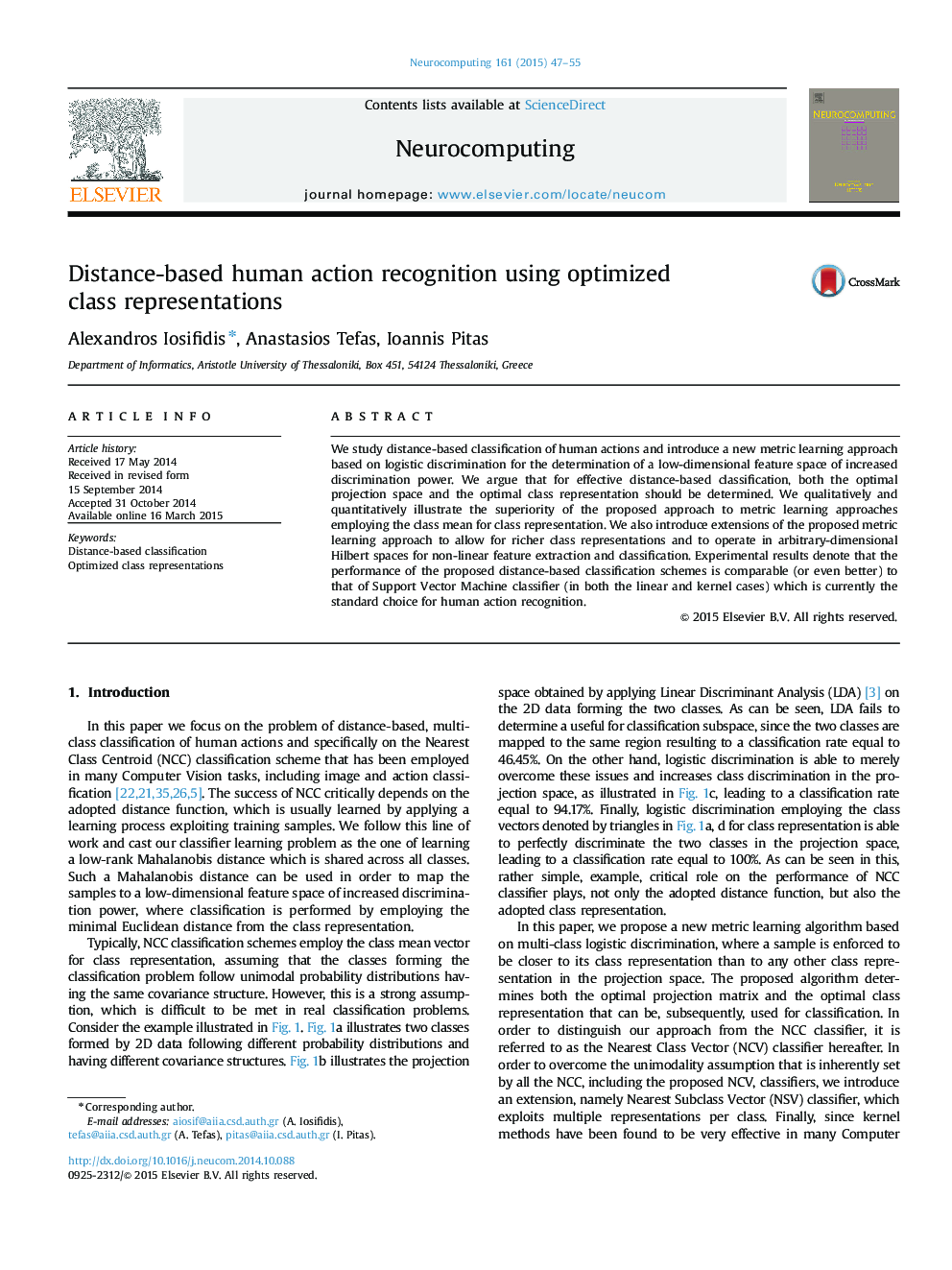| Article ID | Journal | Published Year | Pages | File Type |
|---|---|---|---|---|
| 6865789 | Neurocomputing | 2015 | 9 Pages |
Abstract
We study distance-based classification of human actions and introduce a new metric learning approach based on logistic discrimination for the determination of a low-dimensional feature space of increased discrimination power. We argue that for effective distance-based classification, both the optimal projection space and the optimal class representation should be determined. We qualitatively and quantitatively illustrate the superiority of the proposed approach to metric learning approaches employing the class mean for class representation. We also introduce extensions of the proposed metric learning approach to allow for richer class representations and to operate in arbitrary-dimensional Hilbert spaces for non-linear feature extraction and classification. Experimental results denote that the performance of the proposed distance-based classification schemes is comparable (or even better) to that of Support Vector Machine classifier (in both the linear and kernel cases) which is currently the standard choice for human action recognition.
Related Topics
Physical Sciences and Engineering
Computer Science
Artificial Intelligence
Authors
Alexandros Iosifidis, Anastasios Tefas, Ioannis Pitas,
